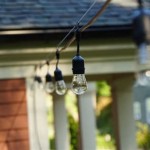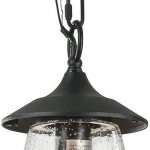Do Outdoor Fountains Need Electricity? A Comprehensive Guide
The question of whether outdoor fountains require electricity is not a simple yes or no. The answer depends entirely on the type of fountain being considered. While many popular outdoor fountains rely on electric pumps to circulate water and create the desired visual and auditory effects, alternative designs offer functionality without the need for an electrical power source. Understanding the distinctions between these types is crucial for making an informed decision tailored to specific needs and preferences.
This article will delve into the various types of outdoor fountains, exploring which ones need electricity and why, while also examining the alternatives and their operational principles. The objective is to provide a comprehensive overview to assist in selecting the most suitable fountain for any outdoor space.
Understanding Electrically Powered Outdoor Fountains
The majority of outdoor fountains available on the market today utilize electric pumps to function. These pumps are submerged in the fountain’s water basin and draw power from an electrical outlet to circulate the water. The pump forces water through tubing or jets, creating the characteristic fountain display. The advantages of electrically powered fountains include a wide range of design possibilities, consistent water pressure, and customizable features like lighting and adjustable flow rates.
The operational principle is straightforward: an electric motor within the pump drives an impeller. This impeller creates a pressure difference, drawing water into the pump and forcefully expelling it through the designated outlets. The power requirements of the pump will vary depending on the size and complexity of the fountain, generally ranging from a few watts for small tabletop models to hundreds of watts for large, multi-tiered fountains.
The ease of installation and operation is a significant draw for electrically powered fountains. Simply plug the fountain into a grounded electrical outlet, ensure the water level is sufficient, and the fountain is ready to operate. Most models also include adjustable flow controls, allowing for customization of the water display to suit individual preferences.
However, the reliance on electricity also presents certain considerations. Access to a reliable outdoor electrical outlet is essential. If an outlet is not readily available, professional installation by a qualified electrician will be required. Furthermore, the ongoing electricity consumption contributes to operational costs. Although modern fountain pumps are generally energy-efficient, the cumulative effect of continuous operation can be noticeable on electricity bills. Safety is another key consideration; proper grounding and protection from the elements are essential to prevent electrical hazards. Ground Fault Circuit Interrupters (GFCIs) are strongly recommended for all outdoor electrical outlets used for fountains.
Exploring Solar-Powered Fountains: A Hybrid Approach
Solar-powered fountains represent a middle ground between traditional electric fountains and completely non-electric options. These fountains use solar panels to generate electricity, which then powers a small submersible pump similar to those found in electric fountains. While they still rely on electricity, the source is renewable and doesn't directly draw from the electrical grid during operation.
The operation of a solar fountain depends heavily on sunlight. The solar panels convert sunlight into direct current (DC) electricity. This electricity can either directly power the pump or be stored in a battery for later use. Fountains that operate directly from solar panels will only function during daylight hours and may exhibit reduced performance during cloudy or overcast conditions. Fountains with battery backup can store excess energy generated during sunny periods and use it to operate the pump even when sunlight is limited.
The advantage of solar-powered fountains is their reduced reliance on traditional electricity and their potential for cost savings over time. They are also environmentally friendly, utilizing a renewable energy source. Installation is generally simpler than with electric fountains, as there is no need to run electrical wiring to the fountain location. The solar panel can be placed in a sunny area, and the pump itself operates within the fountain basin.
However, solar-powered fountains also have limitations. The performance is directly tied to the availability of sunlight. Battery life can be a concern, and batteries will eventually need to be replaced. The upfront cost of a solar fountain tends to be higher than that of a comparable electric fountain. Furthermore, the pumps used in solar fountains are typically less powerful than those in electric fountains, limiting the size and complexity of the water display.
Non-Electric Fountains: Gravity and Ingenuity
Non-electric fountains utilize the principles of gravity and physics to circulate water without the need for any external power source. These fountains rely on carefully designed systems of reservoirs, pipes, and valves to create a continuous flow of water. While less common than electric or solar fountains, non-electric fountains offer a unique aesthetic and are a sustainable alternative for those seeking a completely off-grid option.
The most common type of non-electric fountain operates on a principle similar to a siphon. A reservoir of water is positioned at a higher elevation than the fountain basin. Water flows from the reservoir down through a pipe and into the basin. As the basin fills, it reaches a certain level, triggering a mechanism that stops the flow of water. At the same time, a separate mechanism siphons water from the basin back up to the reservoir, completing the cycle. This cycle repeats continuously, creating the appearance of a flowing fountain without any external power.
Another type of non-electric fountain utilizes a sealed system where changes in temperature and pressure drive the water circulation. These fountains often involve decorative glass components, where the heating and cooling of the water and air within the system cause water to be drawn up through narrow tubes and then cascade down. These types of fountains are often smaller, more artistic pieces rather than large, landscape-oriented installations.
The primary advantage of non-electric fountains is their complete independence from any power source. They are environmentally friendly, silent in operation (compared to the hum of an electric pump), and require minimal maintenance. Installation can be more complex than with electric fountains, as it involves careful positioning of the reservoir and precise adjustment of the flow mechanisms. The design options for non-electric fountains are also more limited, as the functionality is constrained by the laws of physics. The water display is typically less dramatic than that of an electric fountain, but the elegance and simplicity of non-electric fountains can be highly appealing.
The size of non-electric fountains is often limited by the practical considerations of the water reservoir. For a constantly flowing effect, a significant reservoir is needed at a higher elevation than the discharge point of the fountain. Moving water to this higher elevation in a non-electrical manner can be achieved, for example, with manual pumping which is still considered an electrical free approach. However, this requires manual effort and regular intervention.
When considering a non-electric fountain, it is important to carefully plan the water source and replenishment method. Rainwater harvesting can be an excellent solution for replenishing the reservoir. A well-designed system can capture rainwater from rooftops or other surfaces and direct it to the reservoir, ensuring a sustainable water supply for the fountain.
Factors to Consider When Choosing a Fountain
The decision of whether to choose an electric, solar, or non-electric fountain depends on a variety of factors, including budget, aesthetic preferences, environmental concerns, and the availability of resources. Each type of fountain offers its own unique set of advantages and disadvantages.
For those seeking a wide range of design options, consistent water pressure, and customizable features, an electrically powered fountain is often the best choice. However, it is essential to consider the cost of electricity and the need for a reliable outdoor electrical outlet. Solar-powered fountains offer a compromise between convenience and sustainability, reducing reliance on traditional electricity while still providing a powered water display. Non-electric fountains are ideal for those seeking a completely off-grid solution and a minimalist aesthetic. However, the limited design options and the need for careful planning may be a deterrent for some.
The size of the fountain is another important consideration. Large, multi-tiered fountains typically require powerful pumps, making electric fountains the most practical choice. Smaller fountains can often be powered by solar panels or even designed to operate without electricity. The surrounding environment also plays a role. If the fountain is located in a sunny area, a solar-powered fountain may be a viable option. If the fountain is located in a remote area without access to electricity, a non-electric fountain may be the only feasible choice.
Maintenance requirements also vary depending on the type of fountain. Electric fountains require regular cleaning to prevent the buildup of algae and debris. Solar-powered fountains also require cleaning of the solar panels to ensure optimal performance. Non-electric fountains typically require less maintenance, but the flow mechanisms may need occasional adjustment.

Do Garden Fountains Need Electricity

Garden Fountains Electric Versus Solar Premier Ponds

Garden Fountains Electric Versus Solar Premier Ponds

Do Garden Fountains Need Electricity

The Best Solar Water Features For 2024 Bbc Gardeners World

Do Garden Fountains Need Electricity

Essential Guide To Planning Water And Electric Supply For Outdoor Fountains In Dubai Modern Art Customizable Marble Statues Sculptures Marblising

5 Hp Classic Series Electric Fountain Surface Aeration Solar Pond Fountains

Sunnydaze Decor 4 Tier Electric Pineapple Water Fountain In Earth Fc 73650 The Home Depot

Sunnydaze Decor 43 In 3 Tiered Flower Blossom Electric Fountain Earth 73643 Fc The Home Depot
Related Posts







